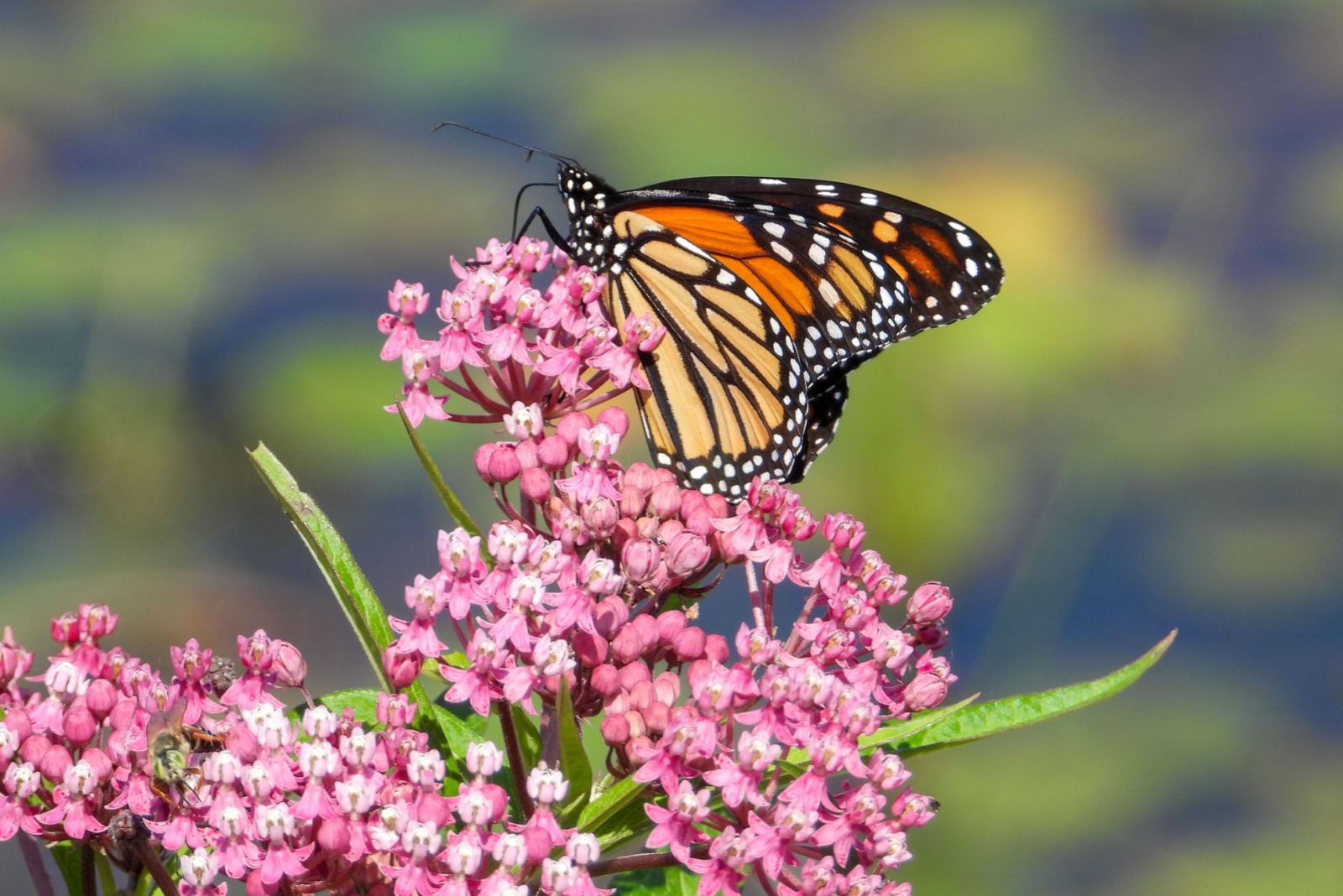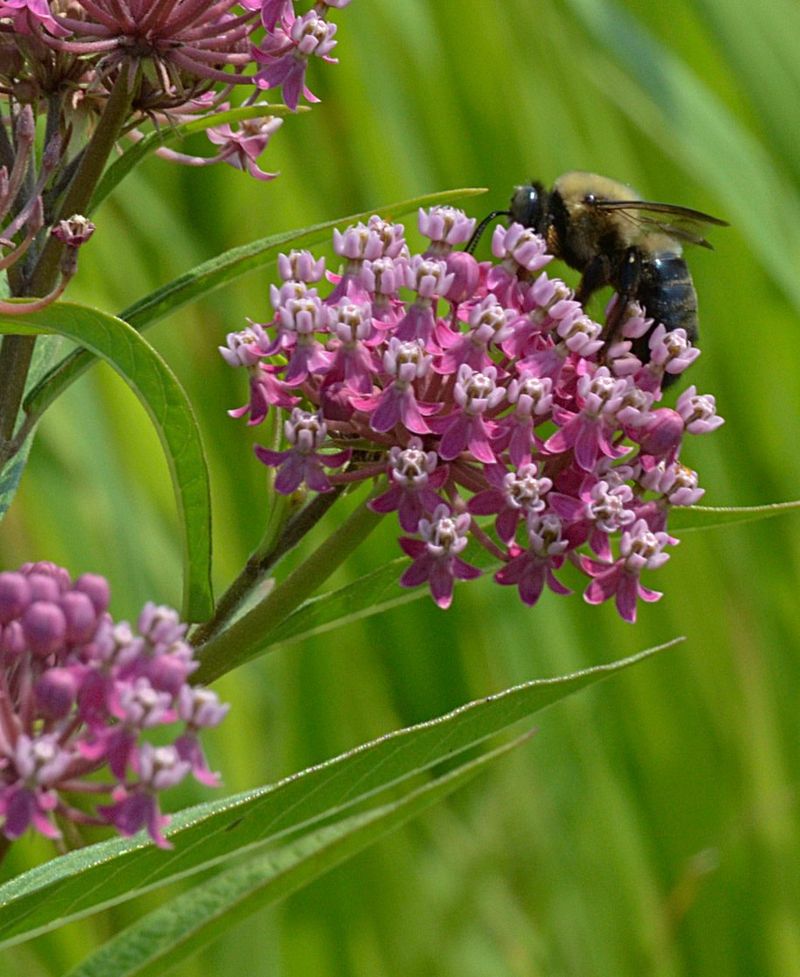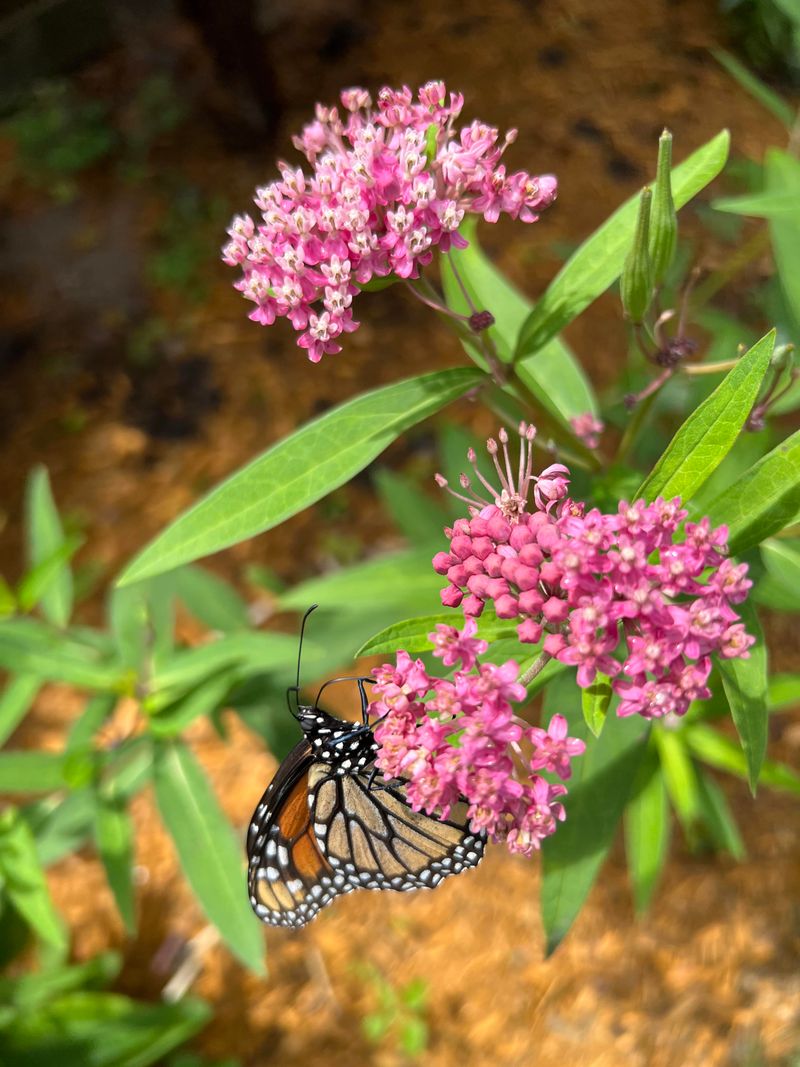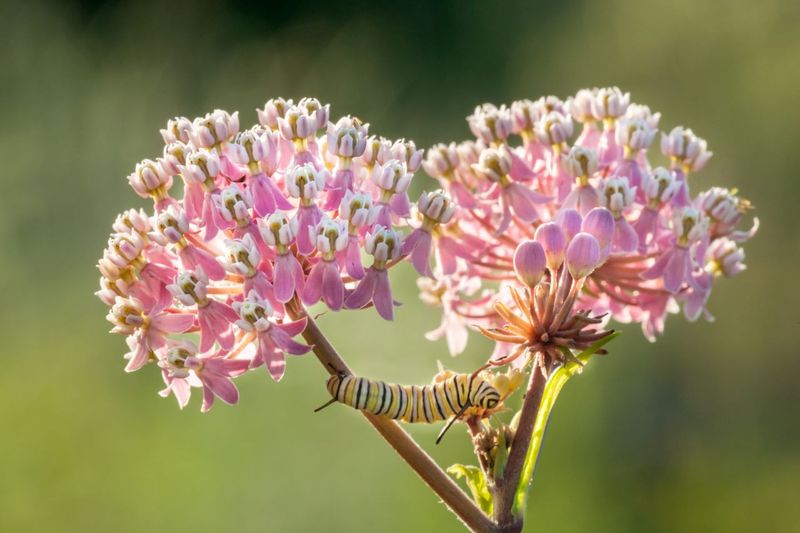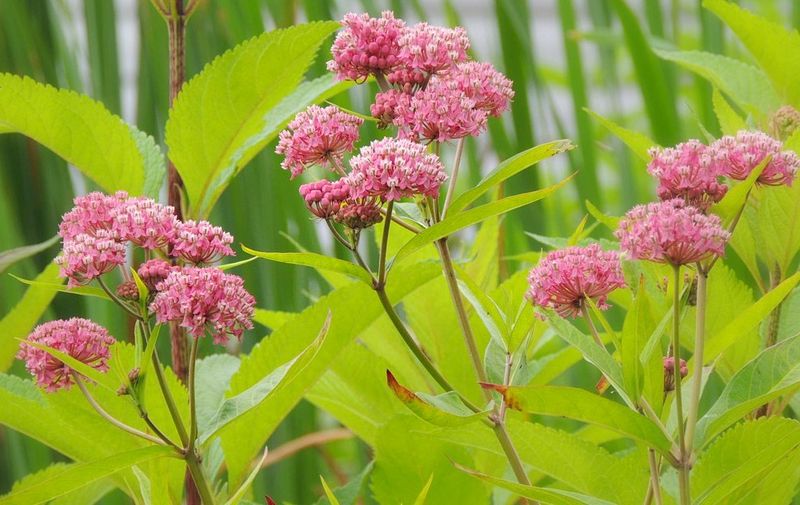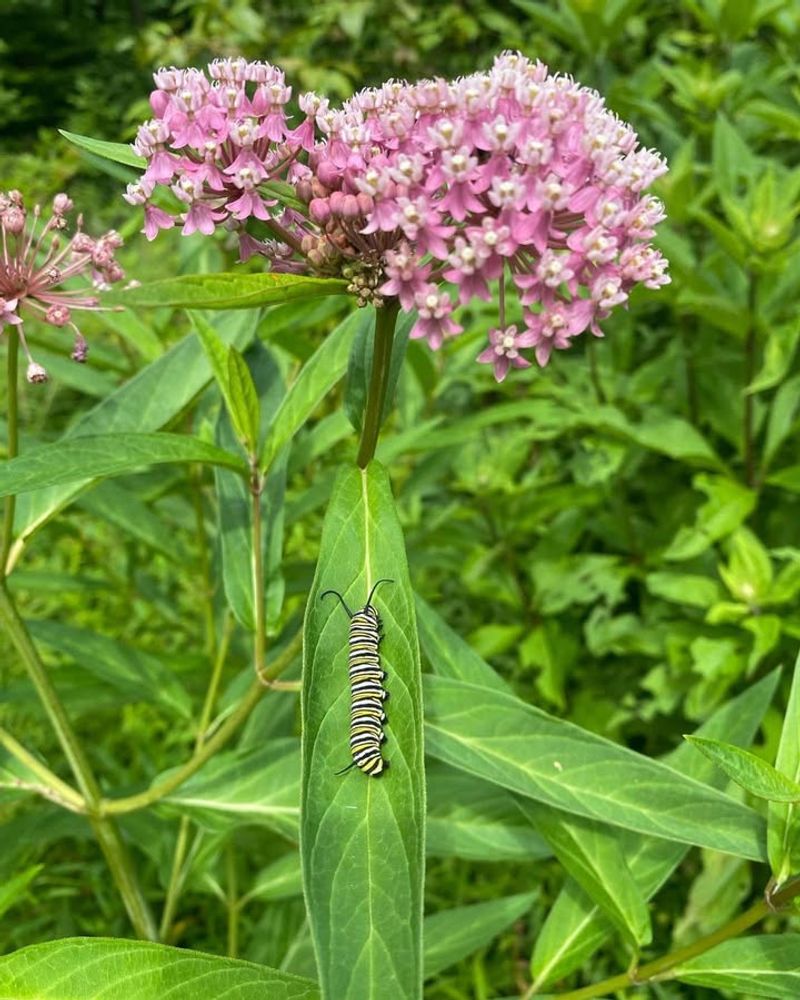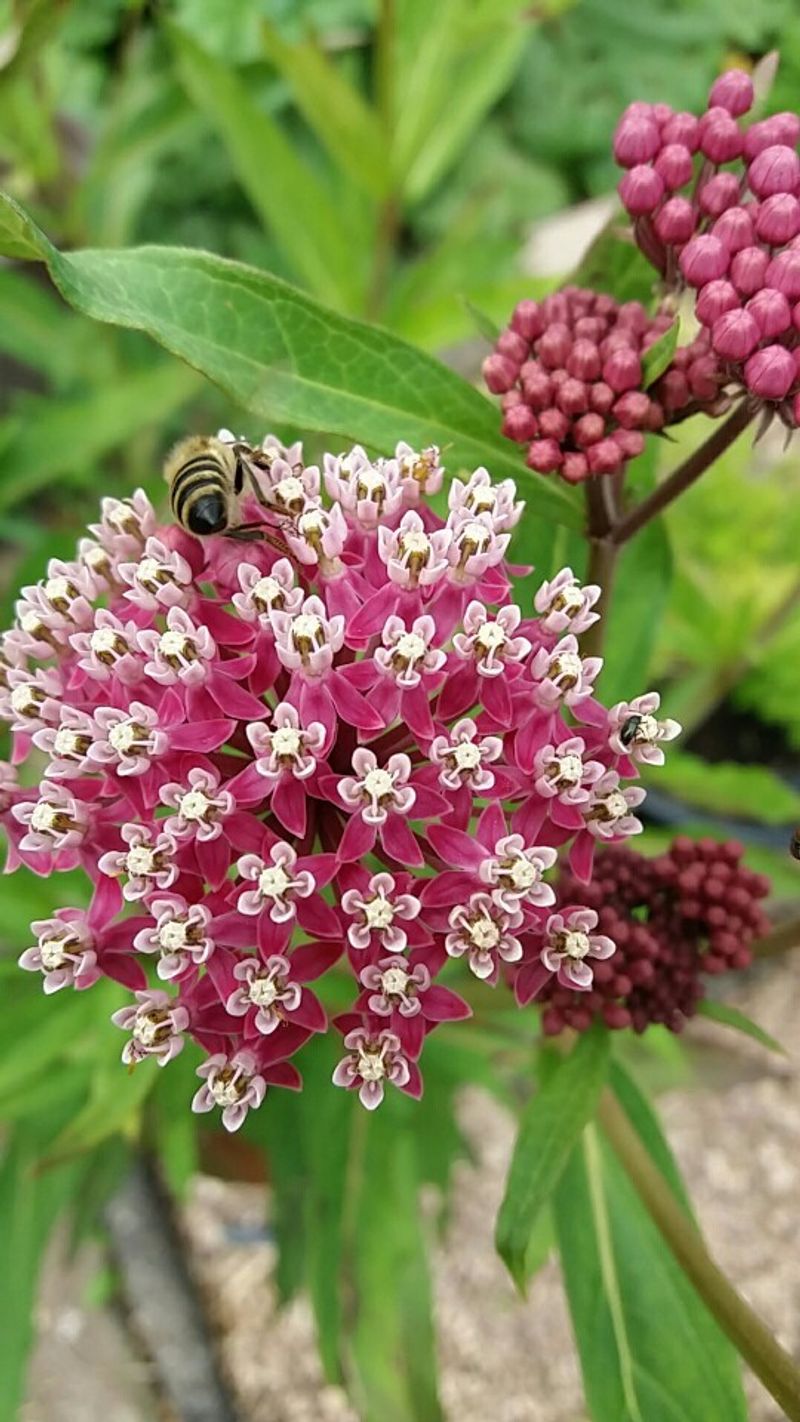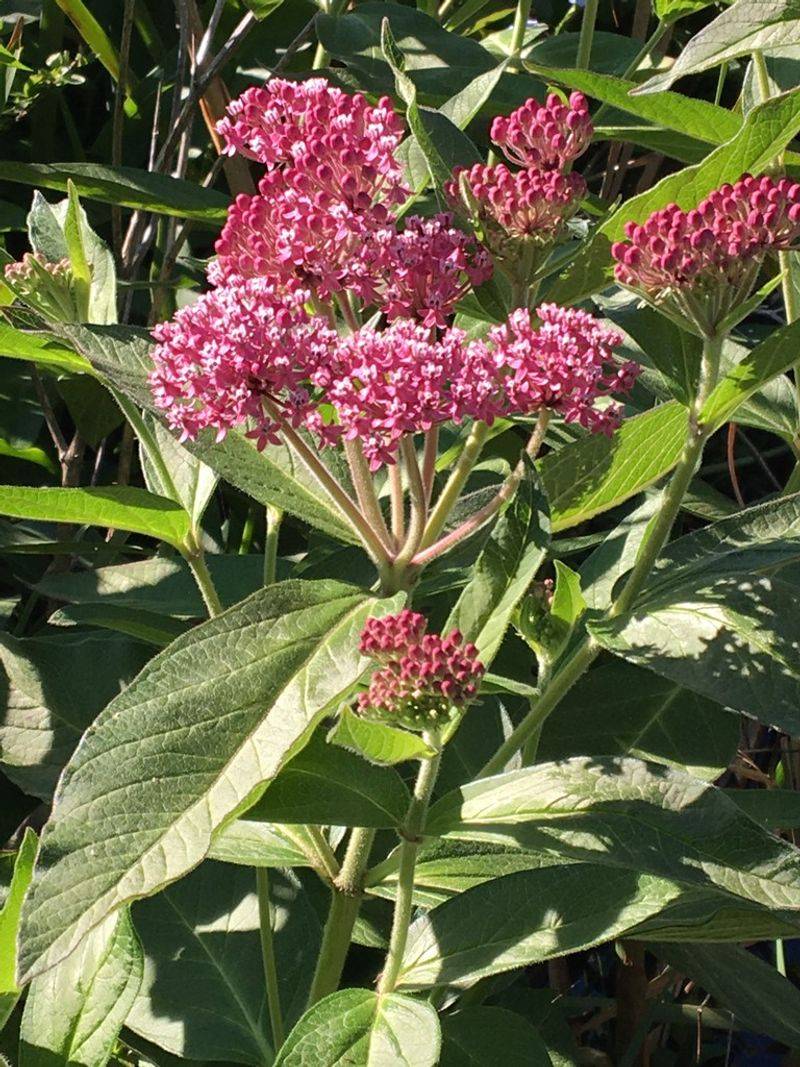Swamp milkweed has become a favorite among Louisiana gardeners who want to attract more butterflies to their outdoor spaces. This native plant thrives in the state’s warm, humid climate and offers nectar that butterflies simply can’t resist.
If you’re looking to transform your yard into a butterfly haven, understanding why swamp milkweed works so well will help you create the perfect habitat.
1. Native Plant Perfectly Suited To Local Conditions
Swamp milkweed evolved right alongside Louisiana’s butterflies, making it a natural match for local pollinators. Unlike imported plants that struggle with humidity and heat, this native thrives without constant fussing.
Monarchs and other butterflies recognize it instantly as a reliable food source. Louisiana gardeners find it grows easily in various soil types, from damp lowlands to average garden beds.
Choosing native plants strengthens the entire ecosystem while reducing maintenance time and water usage.
2. Blooms Arrive During Peak Butterfly Migration
Timing matters when feeding hungry travelers. Swamp milkweed produces its pink flower clusters right when monarch butterflies pass through Louisiana during their incredible migration journey.
Spring and summer blooms provide energy for butterflies heading north, while late-season flowers fuel their return south. This perfect synchronization happens naturally because both plant and insect evolved together over thousands of years.
Gardeners who plant it essentially create rest stops along an ancient highway.
3. Rich Nectar Production Outcompetes Other Flowers
Butterflies need high-energy fuel, and swamp milkweed delivers. Each flower cluster produces abundant nectar that’s richer in sugars than many ornamental alternatives.
Swallowtails, fritillaries, and skippers visit repeatedly throughout the day because the rewards are worth the trip. Louisiana’s long growing season means these plants keep producing nectar for months, not just weeks.
A single established clump can feed dozens of butterflies daily, making your yard a popular neighborhood destination.
4. Essential Egg-Laying Site For Monarchs
Female monarchs search specifically for milkweed plants when ready to lay eggs. Swamp milkweed provides both food and nursery in one convenient package.
The leaves contain compounds that protect caterpillars from predators, making them taste terrible to birds. Louisiana gardeners who grow this plant often spot tiny eggs on leaf undersides and watch caterpillars munch happily for weeks.
Supporting the full butterfly life cycle creates a truly rewarding garden experience beyond just attracting adult butterflies.
5. Tolerates Louisiana’s Wet Soil Better Than Alternatives
Heavy rains and poorly draining spots challenge many butterfly plants, but swamp milkweed actually prefers moist conditions. The name tells the story—this plant naturally grows in wetlands and along waterways.
Louisiana’s frequent summer storms don’t phase it at all. Gardeners with low-lying areas or rain garden projects find it solves problems while attracting wildlife.
Even during dry spells, established plants develop deep roots that help them survive without constant watering, making them surprisingly adaptable.
6. Clusters Create Visible Landing Pads
Butterflies spot swamp milkweed from impressive distances because its pink flower clusters stand out against green foliage. The rounded shape provides stable landing platforms that make feeding easy.
Multiple flowers bloom together, allowing several butterflies to feed simultaneously without competing. Louisiana gardeners notice that grouping three or more plants together creates even stronger visual signals that attract passing butterflies.
Think of it as putting up a neon sign that says “Fuel Available Here” in butterfly language.
7. Long Bloom Period Extends Feeding Opportunities
Starting in late spring and continuing through early fall, swamp milkweed keeps producing fresh flowers. This extended bloom time means butterflies find food throughout Louisiana’s lengthy growing season.
Early butterflies get spring nectar, while late-season species still find flowers when other plants have finished blooming. Deadheading spent flowers encourages even more blooms to develop.
Gardeners appreciate getting months of butterfly activity instead of just a brief two-week show that some other plants offer.
8. Low Maintenance Requirements Suit Busy Gardeners
Once established, swamp milkweed practically cares for itself. It resists most diseases and pests that bother other butterfly plants, reducing the need for intervention.
Louisiana’s heat doesn’t stress it, and it spreads slowly through rhizomes to fill space without becoming aggressive. No special fertilizers or soil amendments are needed—just plant it and watch butterflies arrive.
Busy homeowners love plants that deliver maximum wildlife benefits with minimal effort, making this an ideal choice for creating butterfly habitats.

